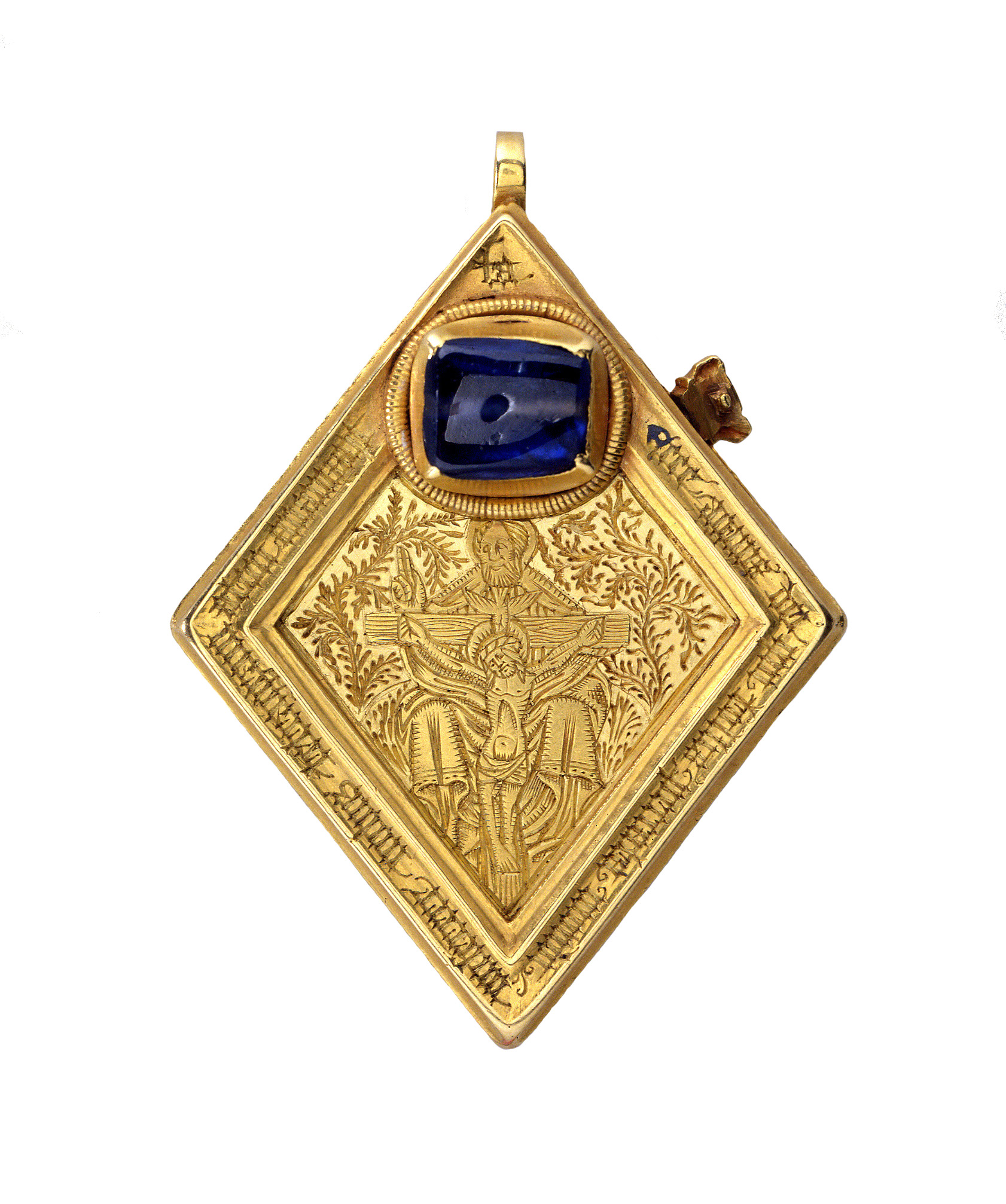Discovered in 1985 along a road leading from Jervaulx Abbey to Middleham Castle in Wensleydale, North Yorkshire, the Middleham Jewel is a gold pendant featuring a large sapphire mounted above a scene of the Trinity on the front and fifteen saints surrounding a scene of the Nativity on the back. The jewel was likely made by a London goldsmith, and it, like many similar pieces, shows signs of repair. Designed to be worn at the chest, it was most likely possessed by a woman of high status.
Although much of the religious design incorporated onto the jewel is familiar, the Middleham Jewel was likely a very personalized piece. The sapphire was valued for its cooling powers, its promotion of chastity in the wearer, and its ability to encourage God to look favorably on the wearer. On the front, the Latin inscription in the border reads: "Behold the Lamb of God who takest away the sins of the world" accompanied by the phrase "have mercy on us." Most remarkably, the inscription further incorporates the word "Ananizapta," which is noted to protect against the effects of epilepsy. The jewel can be opened by sliding the back panel, and when it was found, there were silk textiles and roots inside. It is possible that the compartment was originally intended to hold a wax medallion featuring a religious scene. The jewel might have been intended to protect the wearer from the dangers of childbirth, which, in the late medieval period, affected rich and poor women alike.
The Middleham Jewels is one of many interesting medieval finds associated with Middleham Castle, an important northern stronghold dating back to the twelfth century that later became the principal home of England's infamous King Richard III.
- Stephanie


 Unknown Artist
Unknown Artist